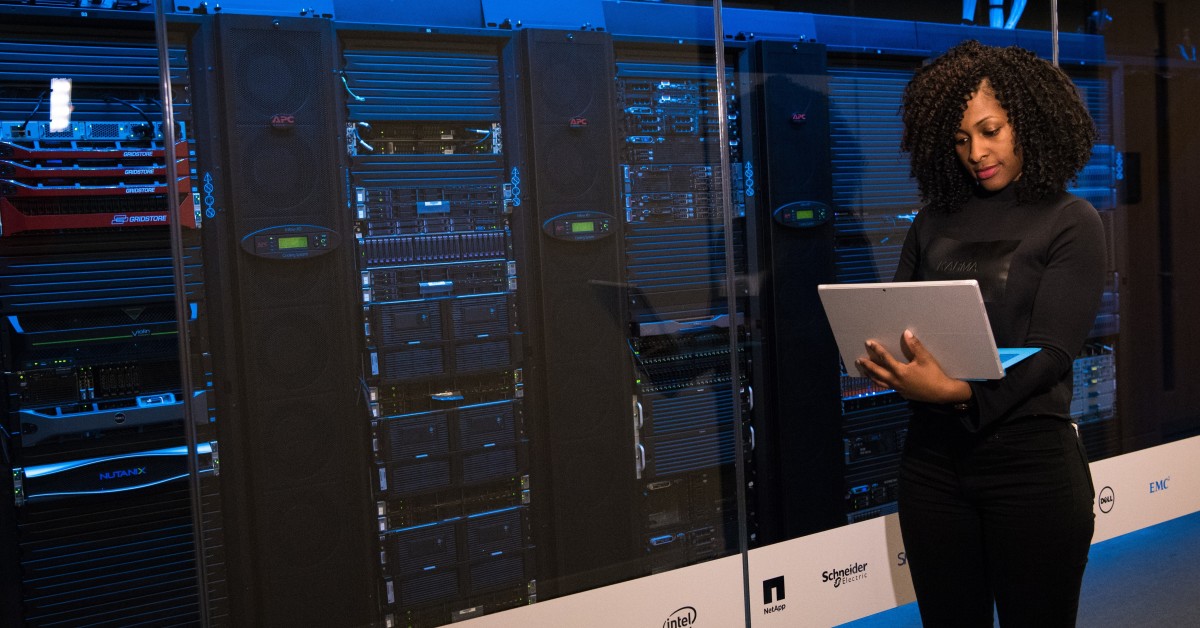
Is a Master's in Computer Science Worth It?
A master's in computer science may take you two years [...]

Data science derives insights from data and transforms them into usable assets. In this big data era—in which practically every device and every transaction generates volumes of digital information—data science is arguably the most prominent and fastest-growing field of human knowledge. And despite the employment downturn caused by the COVID pandemic, data science remains a fast-growing job market.
If you are thinking about transitioning to a new career in data science, an advanced degree can help you stand out among other candidates. A bachelor’s degree may get your career switch started, but know that many data science jobs require a master’s degree, and that many competing for those jobs already hold a master’s or even a PhD. A master’s degree can broaden your options and accelerate your advancement once you land a job.
So, which ten careers for data science career-switchers benefit most from an MSDS? We explore that question in this article by discussing:
Every MSDS program has specific prerequisites that students must meet prior to admission. While they vary from one school to another, they typically include:
Most Master of Science in Data Science (MSDS) degree programs offer courses in computer science, data analysis, artificial intelligence, data analytics, and data visualization. An MSDS prepares graduates to launch data science careers across various industries, including management, technology, healthcare, and manufacturing.
A typical MSDS curriculum provides students with the skills they need to excel in a data science career. The online Master of Science in Data Science at Tufts University, for example, includes coursework in:
A career transition to data science can be very lucrative. You’ll enter a robust job market with many job prospects for data science positions and competitive salary opportunities. The Bureau of Labor Statistics projects a job growth rate of 15 percent for data scientists, nearly four times the rate for the job market as a whole, Glassdoor identifies data scientist as the second-best job in America.
| University and Program Name | Learn More |
|
Boston College:
Master of Science in Applied Analytics
|
|
|
Merrimack College:
Master of Science in Data Science
|
There are many reasons to consider a career switch to data science, one of America’s fastest-growing occupations. For starters, you’ll be entering an in-demand field with robust salary opportunities. According to LaborInsight, the median salary for data scientists is $114,371 a year. As a data science professional, you’ll enter a high-growth career path with abundant job prospects, rewarding work, and a lucrative salary.
Data science jobs are growing throughout most industries, which means plenty of opportunity. LaborInsight lists the following as the top 10 industries to work in the field of data science:
There is high demand for data science professionals throughout the country. LaborInsight reports the following states as having the highest demand for data science jobs in the past year:
As a data science professional, you will need to know your basics and excel in areas mathematics, statistics, and computing. Mathematics and statistics are building blocks to understanding more complex areas of data science like machine learning and algorithms. This is why most MSDS programs include core courses on mathematical and computing basics.
As artificial intelligence technologies become more common across industries, demand increases for AI/machine learning engineers. Machine learning engineers ensure that the models data scientists run work properly and accurately. They often work as a liaison between company stakeholders to help them understand insights derived from data models.
To pursue a successful career as a machine learning engineer, you’ll need advanced knowledge in Python and software engineering. The job also requires the ability to work with different algorithms and a deep understanding of machine learning theory. According to Payscale, the average salary for an AI/machine learning engineer is $112,639. Entry-level professionals with less than one year of experience can expect to earn an average annual salary of $94,289, while those with 10 to 19 years of experience make an average of $148,929.
A business intelligence analyst improves business growth and opportunity by collecting and analyzing data sets and making recommendations based on findings. Organizations rely on business intelligence analysts to identify improvement areas, particularly with a particular focus on increasing profits. It is essential for business intelligence analysts to have strong analytical skills and communicate their findings to stakeholders.
Skills needed to be successful in this position include the ability to utilize data analytics,
data visualization and data modeling techniques to leverage findings and drive business decisions. Responsibilities of a business intelligence analyst typically include:
LaborInsight reports that a business intelligence analyst earns an average salary of $89,202. The top ten percent of earners average $136,268, while the bottom ten percent average around $58,066. Education plays a vital role in compensation. Professionals with a bachelor’s degree earn a median annual salary of $83,800, while their colleagues with a master’s degree earn an average of $103,000.
Data architects build and maintain frameworks for data management that provide access to information. They typically have years of work experience in data design, data management, and data storage work. Data architects excel at problem-solving and have a strong skillset in programming languages such as Python and Java.
Typical data architect responsibilities include:
According to Payscale, the average salary for a data architect is $120,609.
Data engineers develop and maintain integrated data infrastructures that connect an organization’s data ecosystems. They have a deep understanding of software engineering and how to use distributed systems like Hadoop.
Data engineer responsibilities typically include:
LaborInsight reports the median annual salary for data engineers is $112,489. The top ten percent of earners average $136,182, while the bottom ten percent average around $87,410 annually.
Data modelers work alongside data architects to design and build computer databases that improve efficiency and reduce data redundancy issues. They identify areas to improve through data. An aspiring data modeler should have deep knowledge of data modeling methods and experience working with dimensionally modeled data.
Data modeling professionals perform the following responsibilities:
The average salary for a data modeler, according to Payscale, is $83,706.
A data visualization developer creates visual representations to explain data. These highly trained professionals have mastery in data warehousing, statistical analysis, and technologies such as HTML5, Python, TypeScript, Javascript, and CSS.
Day-to-day data visualization developer responsibilities include:
ZipRecruiter reports the average salary for a data visualization developer is $120,997.
A data warehouse refers to a system that holds data from multiple sources. Data warehouse engineers build, maintain, and execute data warehouse strategies to pull together data to report and analyze. These reports inform essential decisions within an organization. Data warehouse engineers are highly skilled with data solutions and have a strong understanding of data security and privacy issues.
Hiring managers for this position typically look for candidates who can assume the following responsibilities:
PayScale indicates that the average salary for a data warehouse engineer is $117,047.
Health informaticist professionals improve healthcare solutions and patient care by increasing the efficiency of treatment. They work at the intersection of science, technology, and computer science to develop systems that collect and manage health data they can leverage to improve healthcare services.
Successful health informaticists excel at the following responsibilities:
According to Payscale, the average salary for a health informaticist is $67,534.
A robotics research engineer develops machines (robots) that can replicate human actions and perform tasks that might be hazardous to humans. Robotics research engineers also design, build, and maintain robots and the software that controls them.
Job duties of a robotics research engineer include:
LaborInsight reports the average salary for a robotics research engineer at $92,184. The top ten percent of earners average $115,193, while the bottom ten percent average around $66,527 annually.
Statisticians use statistical techniques to gather, analyze, and interpret data to solve problems and make recommendations in such varied enterprises as government, business, healthcare, engineering, and environmental sciences. An outstanding statistician has strong analytical and technical skills. Statisticians must also be able to communicate findings to key stakeholders.
Hiring managers for this position are usually looking for candidates with the ability to:
According to LaborInsight, the median salary for statisticians is $86,173. Professionals with three to five years of experience earn an average compensation of $88,000, while those with over nine years of experience earn over $107,000.
A career path in data science starts with earning the necessary degree. There are many considerations when deciding between an online master’s or a traditional on-campus master’s in data science.
Here are some factors to consider throughout your decision-making process:
Convenience is one of the significant benefits of online education. Online students can study where they want, when they want. Most online programs offer asynchronous learning, allowing students to engage in their courses on their own timetable. Online courses provide flexibility that is ideal for individuals who want to learn at their own pace.
Prospective online students can choose from a wide array of program options. Proximity does not pose any limitations for online students; they have the luxury of enrolling in a program that best fits their needs, regardless of location. This factor alone opens up more program options than for on-campus students who need to stay within a specific geographical area.
Online students can choose from a wide range of format options. Many programs, like the Master of Science in Data Science at Stevens Institute of Technology, offer online programming in both synchronous (live classes) and asynchronous (self-paced sessions) formats. Some programs are 100 percent online, while others, like the University of Virginia’s, offer a hybrid option that blends on-campus and virtual learning.
There are many cost-saving opportunities associated with online learning that many overlook. Although tuition is similar to a traditional on-campus degree, there are expenses such as housing, commuting, parking, meal plans, and live classes that make up most non-tuition college costs. Eliminating these expenses can significantly reduce your total cost.
There are many avenues that an aspiring data scientist can travel to kick off a career change within the data science field. MOOCs and bootcamps offer online credentials, but the most opportunity comes to those with an advanced degree. According to Burtch Works study, 94 percent of data scientists hold a master’s or PhD. To set yourself apart from other candidates and ultimately land your dream data science role, chances are you’ll need a master’s in data science.
Questions or feedback? Email editor@noodle.com

A master's in computer science may take you two years [...]

Most data science professionals have a PhD, but do you [...]
Categorized as: Data Science, Information Technology & Engineering